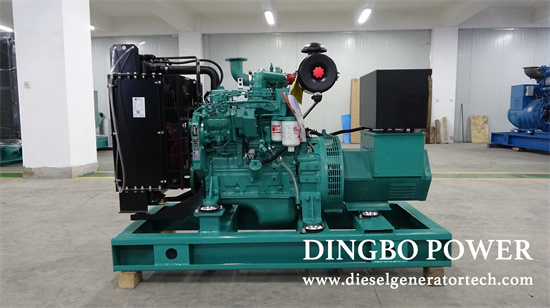When the turbocharger of a diesel generator set operates at a certain speed, the airflow flow rate of its compressor is reduced to a certain extent due to certain factors. The airflow in the compressor will experience strong oscillation, causing blade vibration and surging noise at the inlet of the compressor, resulting in a significant decrease in intake pressure. This phenomenon is called compressor surge. Surging can lead to unstable operation, reduced power, and black smoke from the exhaust, and in severe cases, it can cause damage to the compressor.

Fault cause:
(1) Air intake blockage. The surge of the diesel generator compressor is mainly caused by blockage in the intake system, such as severe blockage of the air filter element, severe aging and flattening of the intake hose, and blockage of too much oil stains in the intake pipe. Due to blockage, the turbocharger delivers insufficient air to the cylinder during operation, resulting in significant fluctuations in air pressure and causing compressor surge. The deformation of the flow channel of the compressor nozzle ring can also cause surge.
(2) Changes in atmospheric temperature. When a turbocharged diesel generator set with an intercooler operates in a high-temperature environment, or when a turbocharged diesel generator set with an intercooler operates at a low temperature, the compressor is prone to surge. This is because changes in atmospheric temperature cause changes in the operating line of the turbocharger, not just because the turbocharger itself has problems.
Dingbo Power Generation Equipment provides troubleshooting methods based on the surge of the turbocharger of the diesel generator set mentioned above: check the air filter element of the diesel generator set, blow or replace the filter element with compressed air, and clean the intake channel or wipe the inner wall of the pipeline with a clean towel.
Jiangsu Dingbo Power Generation Equipment Co., Ltd. has been established for many years. In addition to strict requirements on the quality of diesel generator set products and after-sales service, it also has strict regulations on the plant environment, production equipment and supporting facilities, which reflects the strict style of Dingbo people. It is not only responsible for generator products, customers, but also employees, so that every employee of Dingbo Power generation equipment can work in a comfortable environment, Make it comfortable for every visiting customer to visit. Dingbo Power Group, relying on high-quality generators, generator sets, diesel generator, diesel generator sets, good services and the care of friends from all walks of life, carries forward the enterprise spirit of "pragmatic innovation, pioneering, unity and hard work, dare to be the first", and adheres to the enterprise style of "treating people with sincerity and heart to heart", has won the strong support of customers in the fields of post and telecommunications, finance, petrochemical, metallurgy, transportation, education, medical care, etc, Having a proud performance. Dingbo people are gradually moving towards economies of scale and entering the international market after joining the WTO with flexible sales strategies and relying on the company's advantages and strength. If you would like to get more information welcome to contact us via sales@dieselgeneratortech.com.
Comments
Post a Comment